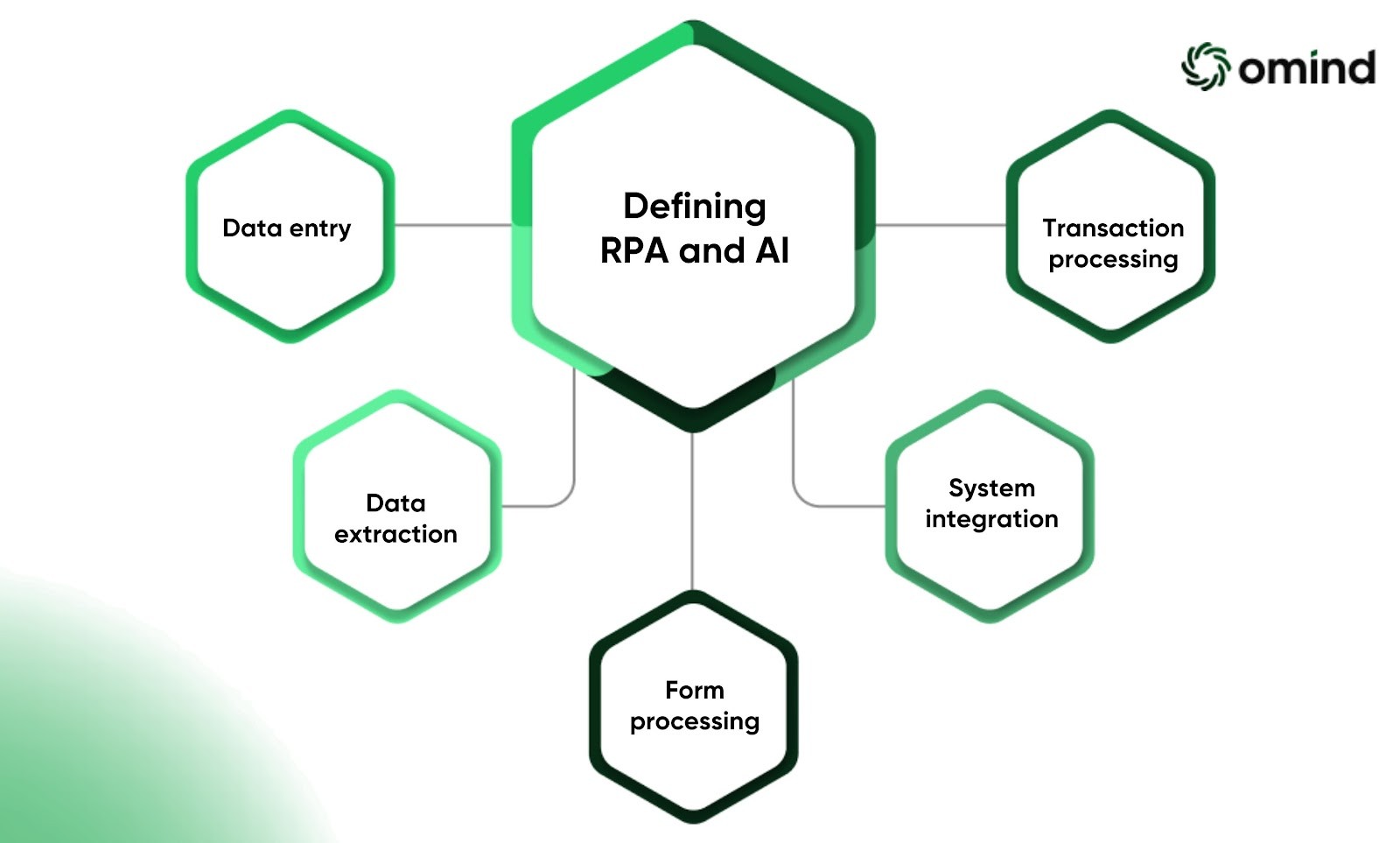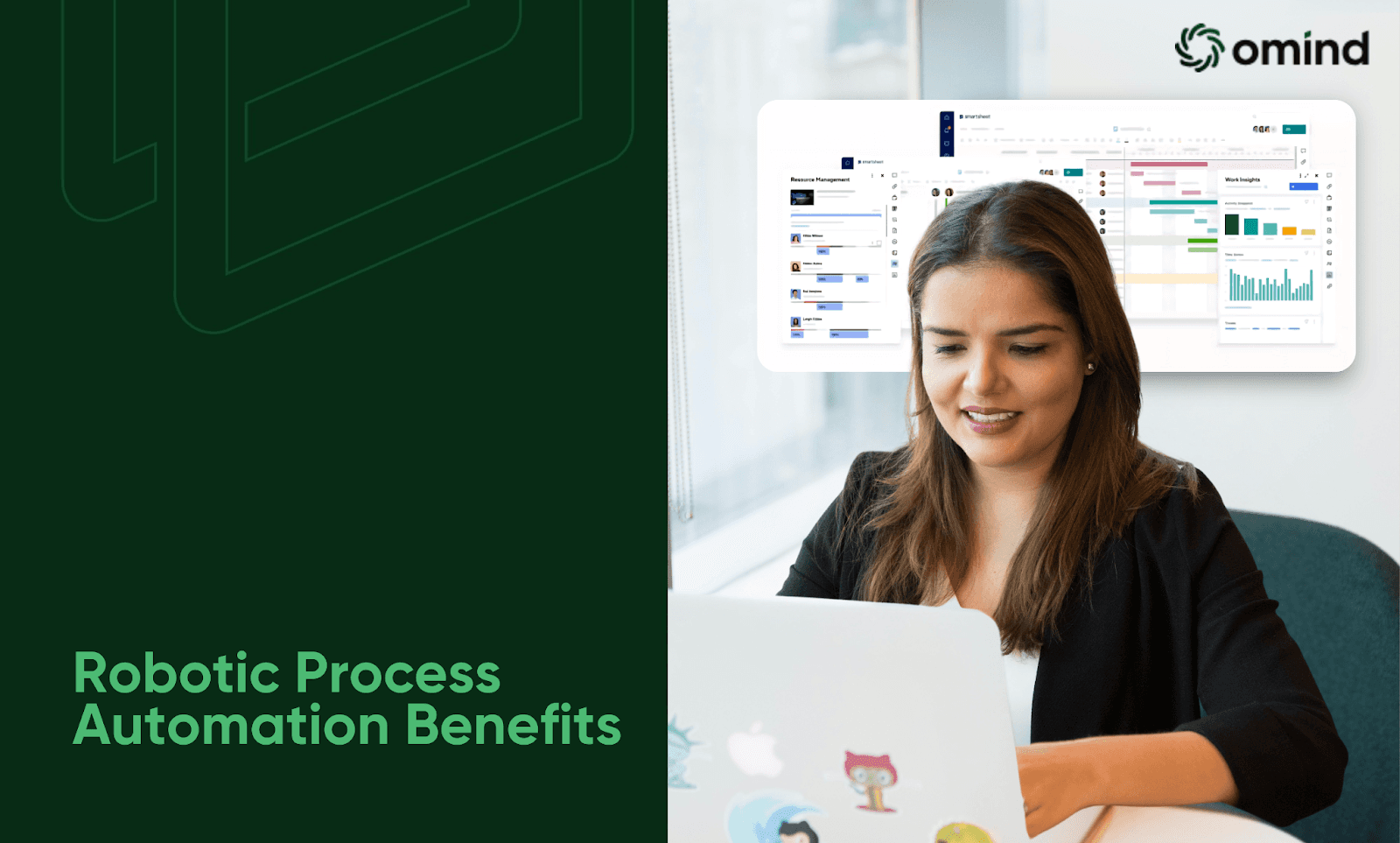Sep 23, 2024
BLOG • 4 MIN READ
Differences Between RPA and AI in Automation
Travel, Hospitality & Transport
Automation has emerged as a critical strategy for achieving operational efficiency, reducing costs, and improving how customers perceive a business, eventually leading them to become repeat visitors. Two key technologies driving this transformation are Robotic Process Automation (RPA) and Artificial Intelligence (AI). While often used interchangeably, RPA and artificial intelligence have distinct characteristics and applications, each offering unique advantages in automating tasks. Let’s take a look at how different they are and where they can be used.
Defining RPA and AI

Robotic Process Automation (RPA) is a process that simulates human interactions with computer systems through pre-defined prompts or triggers, and conversational flow. It automates repetitive, rule-based tasks that are often mundane, error-prone, and time-consuming.
RPA tools can interact with various applications, systems, and data formats without requiring programming or code changes. They can understand and interpret user interfaces, extract data, trigger actions, and communicate with other systems. This allows businesses to automate processes that were previously performed manually, such as:
Data entry: Entering data into systems or applications
Data extraction: Extracting data from various sources and consolidating it
Form processing: Filling out and submitting forms electronically
System integration: Connecting different systems and transferring data between them
Transaction processing: Processing transactions, such as orders, payments, and invoices
Artificial Intelligence (AI), on the other hand, is a broad field of computer science that focuses on creating intelligent agents, which are systems that can reason, learn, and act autonomously. AI systems can mimic human cognition by performing tasks that typically require human intelligence, such as:
Learning: AI systems can learn from data and experience, improving their performance over time. This can be achieved through techniques like machine learning, deep learning, and reinforcement learning.
Reasoning: AI systems can reason about information and make decisions based on logical rules and patterns. This involves tasks such as problem-solving, planning, and inference.
Perception: AI systems can perceive the world around them through sensors like cameras, microphones, and touch sensors. They can process sensory data to understand and interpret their environment.
Natural language processing: AI systems can understand and generate human language, enabling them to communicate with humans in a natural way.
Creativity: AI systems can now generate creative content, such as art, music, and literature. In fact, newer models are also generating video.
Comparative Analysis of RPA and AI
While RPA and AI are both used extensively in automation, they differ in their capabilities and applications. Let’s take a look at the differences between the two, along with their features, in the table below.

RPA is well-suited for automating repetitive, rule-based tasks. It is relatively easy to implement and has a lower initial cost, but it may require ongoing maintenance and updates. RPA is particularly effective when dealing with high-volume, low-complexity processes. By automating these tasks, its capabilities are limited to predefined rules and workflows, making it less suitable for tasks that require complex decision-making or the ability to adapt to changing circumstances.
AI is more versatile and can handle complex, cognitive tasks. It can learn from data and improve over time, but it requires specialized skills and may have a higher initial cost. Still, AI is ideal for applications that require advanced cognitive abilities. AI is particularly well-suited for tasks involving tasks like natural language processing, and image analysis. It still requires specialized skills and resources to develop and maintain.
The best choice for a particular application depends on the specific requirements, including the complexity of the tasks, the volume of data, and the desired level of automation. In many cases, a combination of RPA and AI can provide the most effective solution.
Challenges In Implementing Both
The implementation of both AI and RPA, while promising, presents several challenges that must be carefully considered. For instance developing accurate and effective AI or RPA models requires specialized skills, access to large datasets, and ongoing updates to keep them relevant. Maintaining these models can also be time-consuming and resource-intensive, as they may require frequent retraining to adapt to changes in data or requirements.
Trade-off between specialized and generalized solutions can also be significant: Specialized solutions might provide high efficiency, but can be less flexible and adaptable to new challenges. Generalized solutions, on the other hand, are more versatile but require significantly more training data and computational resources. Organizations must carefully evaluate their specific needs to determine the most appropriate approach.
It’s also important to assess the ROI that you get from either RPA or AI in high-volume workflows, in order to justify the initial investment and ongoing costs. While these technologies can significantly improve efficiency and productivity, it is essential to quantify the benefits and compare them to the costs of implementation, training your teams on usage, and maintenance of databases and models. This requires careful analysis of factors such as time savings, whether the models worked, and how fast the models took to train. By carefully considering these challenges and considerations, organizations can make informed decisions.
The Future Of Automation

As AI and RPA technologies continue to advance, we can expect to see even more sophisticated automation solutions that can transform industries and create new opportunities. To successfully adopt RPA and AI, organizations must carefully consider several strategic factors. These include:
Identifying suitable use cases: Identifying tasks and processes that are well-suited for automation is essential.
Building a strong foundation: Investing in the necessary infrastructure, skills, and data is crucial for successful implementation.
Addressing challenges and risks: Organizations must be prepared to address challenges such as data quality, security, and ethical considerations.
Measuring and optimizing performance: Continuously monitoring and optimizing automation solutions is essential to ensure they are delivering the desired benefits.
For the best in automation and AI, choose Omind’s solutions that synchronously use both to their best capabilities to give your customers unparalleled CX and BX. Omind has partnered with over 80 clients across three countries, serving partners in multiple industries, especially fintech and manufacturing.
Click here to schedule a demo with any of our platforms.
AUTHOR
Team Omind
Empowering Businesses with Unified Customer Experience Platform, Leveraging Advanced AI and Intelligent Automation
PRODUCT
Arya AI
Share LINK
Related Blogs






